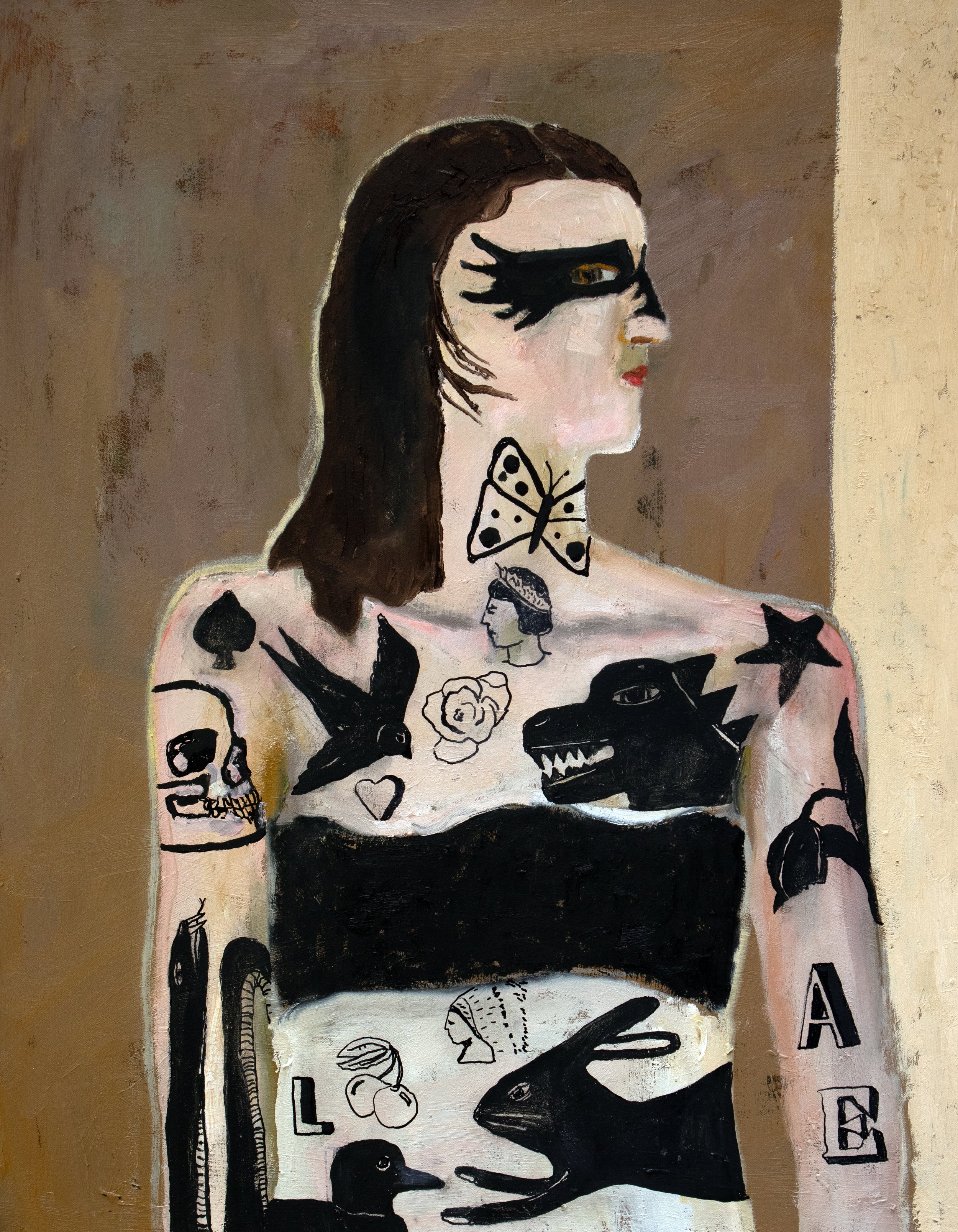Mark Milroy
People, books, picture postcards, plants and everyday objects like an old pocket knife become props and subject matter in my paintings. I draw upon personal experiences and poignant moments from my life for imagery, my goal is to convey some of the very honest moments of humor, oddness, frustration, joy, wonder and pain that I have felt. I paint people and places as well as personal experiences and narratives. Everything I choose has meaning to me and to the world that surrounds me. I attempt to make paintings that are poetic and filled with metaphor and meaning.
I was born in St. Paul Minnesota and grew up in St. Thomas, Ontario. I received my MFA from The New York Studio School and a BFA from the School of the Art Institute of Chicago. I am represented by Nancy Margolis Gallery and am Artist in Resident at Marymount School of New York. I live and work in Brooklyn NY and I have two boys named Emerson and Angus.
Instagram: mark_milroy
Mark Milroy's work is featured on the cover of Issue 6 of the Artsin Square magazine, and his interview is also published in this issue. Learn more
Hi Mark, tell us about your background. How and when did you first start to paint?
Hi ArtsinSquare, thank you for having me! I’m number five of six kids. I was born in Saint Paul, Minnesota, but that didn’t last long. By age four, we had moved to a small village outside Cleveland, and by age ten, we moved to Canada. So I grew up as an American but still carry a Canadian identity to this day. That’s important to know when it comes to my painting, as all my early influences came from Canadian painters like Tom Thomson, and from European—particularly British—figurative artists like Freud, Auerbach, and Bacon.
I was always drawing, and like a lot of kids, art class was my favorite. But I didn’t think of it as a career—or even something possible—until my second year of university. I was struggling deeply and decided to get some help. After years of academic failure, I went for testing to see if there were any definable learning disabilities. This was in 1991–92, and dyslexia wasn’t widely understood at the time.
After months of testing, I finally got answers. The psychotherapist who did the testing suggested I try fine art. When I learned that you could actually get a university degree in art, I thought, “Maybe this is something I can do,” especially after failing at nearly everything else. I was almost 21 or 22 the first time I picked up a paintbrush.
How do you begin to work? What is your process like?
I don’t always start so abstract, but I often work my way to the image. It’s like drawing—I start with what interests me most. I draw with paint or paint with the paint. That allows me to find the image, not just make it.
You mention using everyday objects like pocketknives and postcards in your paintings. Can you walk us through that process?
Postcards can serve as transcriptions of a work, but more importantly, they give the viewer a glimpse into what I’m thinking. For example, in one painting I included Gauguin’s Manao Tupapau (Spirit of the Dead Watching) to represent my heart disease, and Manet’s portrait of Emile Zola to reflect my struggles as a student—and my ongoing desire to learn.
You describe drawing inspiration from personal experiences and poignant moments. How do you translate fleeting emotions into visual language?
When I learned that many of Bonnard’s large paintings began as small sketches, I started carrying small blank notebooks. I used to carry sketchbooks but found them too bulky. These small notebooks that fit in my pocket made a huge difference. The ideas poured out.
It didn’t matter what I drew—there was no pressure for it to be a “good idea” or a “good drawing.” It was about the idea itself. These notebooks gave me freedom of thought. I often think of Picasso’s quote: “Inspiration exists, but it has to find you working.” It took me two decades to start painting my personal narratives, and even then, they often take a long time to incubate.
You paint people and places alongside personal experiences. How do you decide between depicting someone specific or something more symbolic?
It depends on what’s happening in my life—and who’s around and willing to let me work with them. It could be something small or something large, but it has to mean something to me. It doesn’t have to be a shared meaning, but it has to belong to me. Otherwise, it usually doesn’t work.
Describe a real-life situation that recently inspired you.
This week I’m in rural Connecticut with my partner, who’s studying to become an arborist. I knew I wanted to make a portrait of her in her big garden hat. As soon as we began—her sitting in front of an old woodpile—it all clicked. It felt more right than if we had done it in a studio.
In nature, the trees wave, the wind blows, you feel the sun on your back—and your subject is immersed in their world too. People and Place—that might make a good title for a show.


















